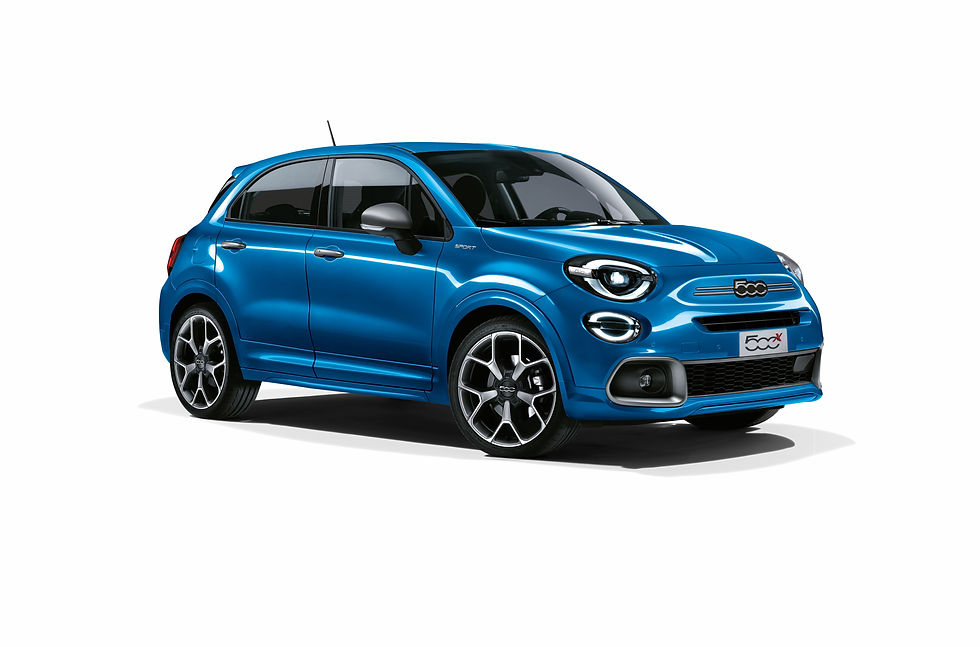History of airbags
- Lu-Allen Kruger
- Dec 8, 2021
- 5 min read
Updated: Feb 21, 2022

What could possibly go wrong?
Airbags are one component you cannot go without in a car, something you need but let's hope you'd never have to make use of it. It does give us a sense of comfort at least that we'll be alright if something had to happen.
Thanks to the geniuses who invented it and brought it to the automotive world it has saved millions of lives.
The early experiment
Behind any invention, is a good idea or some sort of event that led to the idea. One afternoon in 1952 a retired engineer named John W. Hetrick was driving his 1948 Chrysler Windsor to Pennsylvania countryside, with him; his wife and seven-year-old daughter.
About three miles outside Newport, they were watching out for a deer bounding across the road. He had to hit the breaks rather vigorously to avoid a boulder in the middle of the road. In doing this, he then got to thinking that it could have been a lot worse.
He couldn't stop thinking about the event that unfolded, and he thought that there has to be a way to protect passengers from the sudden stopping of a car. He then proceeded to design a "safety cushion assembly for automotive vehicles" and patented it in 1952.
The design included bags that would be inflated and were located in the steering wheel and the glove compartment; for the rear passengers, it would be behind either from seat-head rests. A value would then open and inflate them.
He had to wait one year to receive the patent but even so, he didn't have money to carry through with it. He did pitch this idea to major car companies at the time, unfortunately, though, he got no response.
A German inventor: Walter Linderer had his patent for the same idea about three months after Hetrick had his, but only with compressed air. This would've been done by inflating the bags with compressed air either by bumper impact or the driver, of course, mid-crash is not too plausible. After proper research though, it was found that the compressed air didn't inflate the airbags quick enough for maximum high-level safety.
In the course of the 1950s, Ford and GM started experimenting with an inflatable restraint system. Which would have effectively been an airbag as a seatbelt but it was discovered that it did not deploy quick enough even with a sensor that wasn't present at the time.
GM and Ford soon discovered the implications involved with this safety feature.
Airbags potentially used as an alternative to seatbelts
A mechanical engineer named Allen Breed created the first reliable airbags with sensors which many, at the time, considered the start of the airbag era. He sold it for $5 now at that time, that was a considerable amount. His airbags used two layers of fabric that were vented in a way that would provide less rigid and safer cushion preventing harmful impacts.
Mercedes decided they want a crack at it too, and that same year they started to develop airbags for their vehicles.
Due to the rapid increase in vehicle accidents, the government became more involved in efforts to find ways to lessen these events. Jim Hall, the National Transport Safety Board stated that more American lives have been lost due to highway accidents compared to all the wars the county have fought. So, as a result in 1968, the National Highway Traffic Safety Administration or NHTSA required all cars to have seat belts.
The following year, they proposed using passive restraints in cars to protect passengers not wearing seatbelts. GM though warned about the serious threats imposed by airbags on children. It's because they did early fleet experiments on vehicles and seven fatalities were recorded which was led to believe was caused by the airbag.
The mandate for airbags kept being prevented and delayed but, finally, by the 1970s it was ordered. By 1974, carmakers must either install automatic seatbelts or airbags, however, these manufacturers were opposed to either option. Ford and GM were among the automakers who lobbied against airbag requirements, claiming that the devices were unnecessary, impractical and inappropriate. However, the ruling only got delayed and not stopped.

In 1973, GM's Oldsmobile Tornado became the first car ever with a passenger airbag. Later on, GM made its own air cushion restraint system (ACRS) available as an option for regular production cars such as Cadillacs, Oldsmobile and Buick just to name a few. They made cars equipped with ACRS on the driver side, driver-side knee restraint, and the passenger side. The passenger-side airbag protects front passengers, and also included a dual-stage deployment, which depended on the force of impact.
During the 1980s, car manufacturers began to move away from their insights as an option to install or as a seatbelt replacement. The airbags became designated as supplemental inflatable restraints.
The glorious W126 was introduced in 1981 with an option of airbags in its high-end saloon. The car used sensors that automatically tensed the seatbelts to reduce the passenger's motion on impact, this is quite common in today's cars. They made the airbags and the seatbelts work hand-in-hand with one another rather than individually.

As standard safety equipment
In 1987 brought the Porsche 994 Turbo which came, as standard, with driver and passenger airbags. The first Japanese car to have airbags was the Honda Legend, meanwhile in 1988 Chrysler became the first automaker in the US to offer airbags as standard equipment in their models. 1991 saw all Chrysler minivans be released with airbags. The Jeep Grand Cherokee in 1992 was the first SUV to be available with airbags followed by the Dodge Ram being the first pickup in 1993.
In 1990 Ford decided to include airbags as standard in all their vehicles. That same year the first known accident between two vehicles happened, thanks to the airbags. All the occupants escaped with only minor injuries.1991 brought a new law was introduced that stated, all passenger cars and light trucks should have as standard, have airbags built after September First 1998 for the driver and passengers.
The NHTSA has mandated new rules for advanced airbags to give auto manufacturers more flexibility and has required improved protection for passengers of different sizes regardless of whether they use seatbelts while minimizing the risk to children, infants and other passengers caused by airbags. Since the early 2000s airbags began to appear in even the most budget cars, the side curtains, rear airbags and many more were introduced as time went on.
Today, it's standard in all cars, many people hope to never put this to use but anything can happen.
Follow me on Instagram here
Follow me on Twitter here
Follow me on Quora here
Join my Discord Server here
For direct enquiries send me an email at luallenkruger@gmail.com




Comments